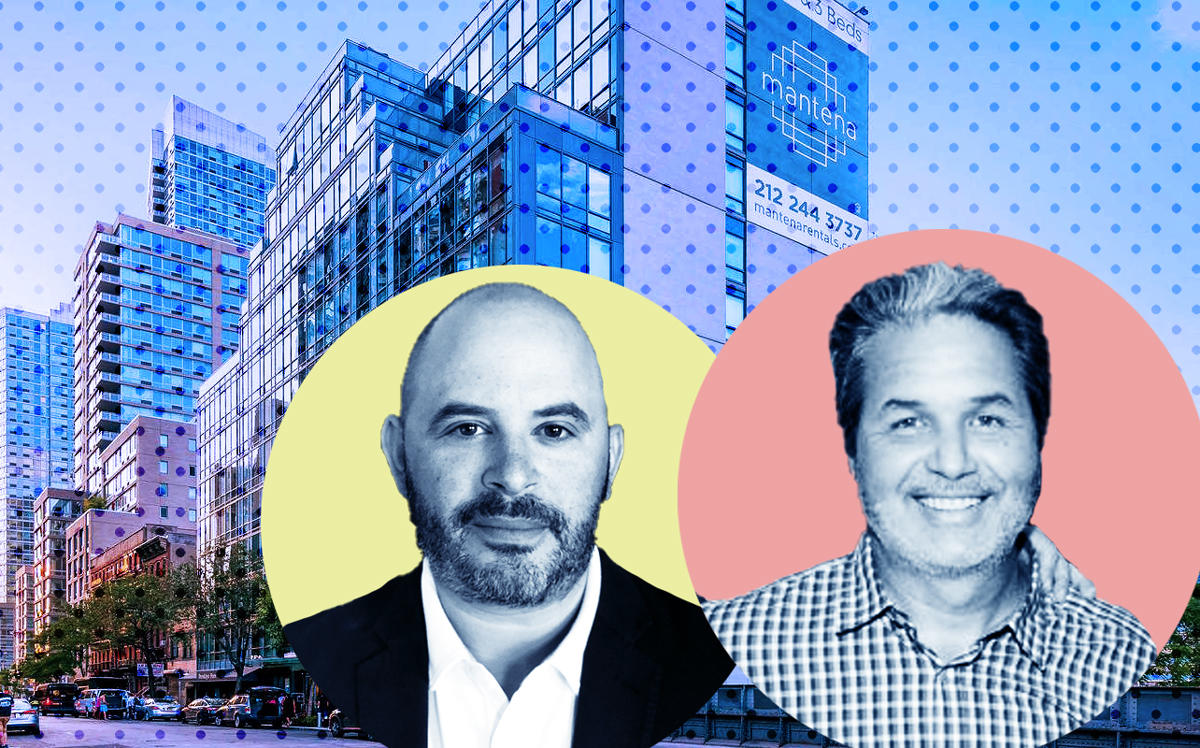Trending
It’s a Mad, Madd, Maddd world
Maddd Equities and its partner Joy Construction have been on a development tear

UPDATED, 9:33 a.m. Oct. 12: It all started with a pack of Juicy Fruit.
During the 1980 Mariel boatlift, among the thousands of Cubans to leave their homeland was Jorge Madruga. Twelve years old at the time, Madruga recalls being berated by his countrymen who stayed behind, who referred to those leaving as “trading themselves for jeans.”
On the trip, his uncle gave him a pack of Juicy Fruit gum—something he had never seen before—and told him to give pieces out to other people on the boat. Instead, Madruga tore the sticks of gum in two, keeping half the pieces for himself and giving the other half away.
“He’s like, ‘I didn’t even know what it was. I didn’t know what you were supposed to do with it or anything,’” said Eli Weiss of Joy Construction, Madruga’s longtime business partner and friend. “He just said he knew it didn’t come naturally to just give it away.”
It was Madruga’s first dance with capitalism, a principle you’ve got to embrace to be a New York real estate developer. Today, his firm, Maddd Equities, controls a portfolio of about 3,000 residential units and 5 million square feet, according to Weiss.
The company, which made early and lucrative bets on Hudson Yards about 10 years ago, is now on a development tear, with market-rate and affordable projects ranging from the South Bronx to Downtown Brooklyn. It has about 1,200 units in the pipeline, and Weiss said what helps it compete is running the development process almost entirely in-house. As for Madruga, he believes his background is a distinct business advantage.
“People are proud to see a Spanish person like me be part of these developments in these communities,” he said. “People want to see people like me excel and do better.”
Madruga did have a hiccup with his company’s name about a decade ago, when it was still called Madd Equities. He said he got a call from Mothers Against Drunk Driving reminding him that MADD was their acronym and asking him to change it, and he figured a simple way to do that would be by just tacking on a third d.
“They wanted to take my name back, so I closed that [firm],” he said. “And then I just added another ‘d.’”
Alliances
Madruga and Weiss met in 2004, when Weiss was at the Housing Development Corporation and financed a 42-unit project for Madruga at 499-501 East 165th Street in Morrisania. Weiss then left the HDC at the end of 2006 to spend about 18 months working for Ackman-Ziff and bumped into Joy Construction founder Amnon Shalhov at a conference in 2008. Shalhov told him about a new South Bronx project he and Madruga were working on called St. Ann’s Terrace, spanning six buildings and 641 units.
Shalhov and Madruga were able to persuade Weiss to come on board as an executive on the project, although Weiss said it took some convincing.
“I’ve never dealt with the nuts and bolts of construction, so I was very intimidated,” he said. “But they basically said, ‘We’ll focus on the construction. You focus on the financing and dealing with the government agencies and dealing with compliance and regulations, and we make a perfect match.’”
Although the financial crisis hit in the middle of St. Ann’s, Weiss said he was still able to close on a $250 million financing package for the project. And because Maddd and Joy had been focused on affordable housing, they were relatively insulated from the crisis.
Weiss described this as one of the reasons the joint venture enjoyed focusing on affordable housing.
“You’re able to do a large volume of development and not be at the mercy of a market that you have no control over,” he said, adding that when it comes to market-rate units, “I don’t care which developer you are. At the end of the day, the market is going to dictate where the pricing is for your units.”
In fact, the market turmoil allowed them to take a crack at prime markets such as Midtown.
“If we don’t go to the city now,” Madruga recalls thinking, “we’ll never be able to go to the middle of Manhattan.”
Go West
In 2010, Maddd Equities and Joy Construction were among the early players in Hudson Yards, paying $18.7 million for 431 West 37th Street, a distressed 98-unit, 12-story building.
“Most people were so busy putting out fires,” Weiss said, “that they weren’t looking at opportunity.” Because Maddd and Joy weren’t partnered up with a source of institutional capital like a fund, however, the scope of deals they could do was limited.
“When we saw that opportunity there, I started to scout the area and say, okay, this is the area that I’d like to come to and try to find more deals,” Madruga said.
Chris Gregg, who heads the real estate division at Israel-based Bank LEUMI, has worked with Joy and Maddd on multiple projects and provided them with a $36 million construction loan for the 37th Street project, known as the Mantena. Gregg said he was impressed with their ability to build during the crisis, although the timing did make them a little nervous.
“It was still a Manhattan multifamily rental at very reasonable numbers, and we were still confident it would lease,” he said, “but of course in the back of your mind, you can’t forget what was going on at the time.”
In 2012, the partners sold the property to Sam Zell’s Equity Residential for $84 million. They remain active in Hudson Yards, with projects including the Four Points Manhattan Midtown West hotel at 444 10th Avenue and luxury rental buildings at 411 and 445 West 35th Street.
Money matters
The bulk of Maddd and Joy’s work has always been affordable housing, which Weiss said they have gotten very skilled at putting together financing for over the years.
The money for St. Ann’s, for example, came from tax-exempt bonds and recycled tax-exempt bonds from the city’s Housing Development Corporation, low-income housing tax credit equity from Capital One Bank, funding from the Bronx Borough President’s office and a bonds credit enhanced by JPMorgan Chase, Bank Leumi and Capital One.
“When we work with the city, state programs and federal programs, and you have to make it all work together and make the math work, it’s really unbelievable how complex it gets,” Weiss said. “But between our years of experience and partners in the private sector, I think we have a good grasp on it.”
Maddd and Joy have a number of active projects across the city. In August alone, they filed plans for a 30-story 614-unit project at 3875 9th Avenue in Inwood and closed on a site at 202 Tillary Street in Downtown Brooklyn for just over $30 million. Natixis funded the Tillary deal with a $30 million loan and Jared Zimmel, a director at the French bank, said he has worked with the companies for about two years, initially as part of a 1031 exchange where they bought about 16 Dollar General stores throughout the country.
“They spend time focusing on the important things,” Zimmel said of the pair, “rather than spending time trying to negotiate 20 points, 15 of which really don’t matter at the end of the day.” Natixis also provided an $86 million construction loan for 330 East 62nd Street, where the medical center Memorial Sloan Kettering signed a 48-year lease last year.
Next targets
Maddd and Joy have proposed a multibillion-dollar development in the South Bronx by East 153rd Street and River Avenue as well that would include a soccer stadium, a hotel and up to 3,000 affordable apartments. The stadium would be home to New York City Football Club, the Major League Soccer franchise owned by Abu Dhabi’s royal family and the Yankees.
The companies are also planning a pair of large South Bronx affordable housing projects at 1159 and 1184 River Avenue. Nonprofit Community Access is spearheading the project at 1159 River Avenue, which, will stand 17 stories tall with 250 units. The project at 1184 River Avenue—dubbed the River Crest—will consist of two 17-story buildings with 500 residential units. These projects and the Inwood project are both located in areas that the City Council recently voted to rezone.
The venture may focus more outside of the city for their next big thing, with a keen eye on Newark. The company currently owns 765 Broad Street, where Newark Public Schools recently moved its headquarters, and Madruga said they hope to add to this portfolio going forward.
“What’s happening in Hudson Yards, which is blowing up, it’s going to start happening in Newark as well,” Madruga said, “and we’ll probably look to buy more there.”
This story has been updated to include Community Access’ role at 1159 River Avenue.




